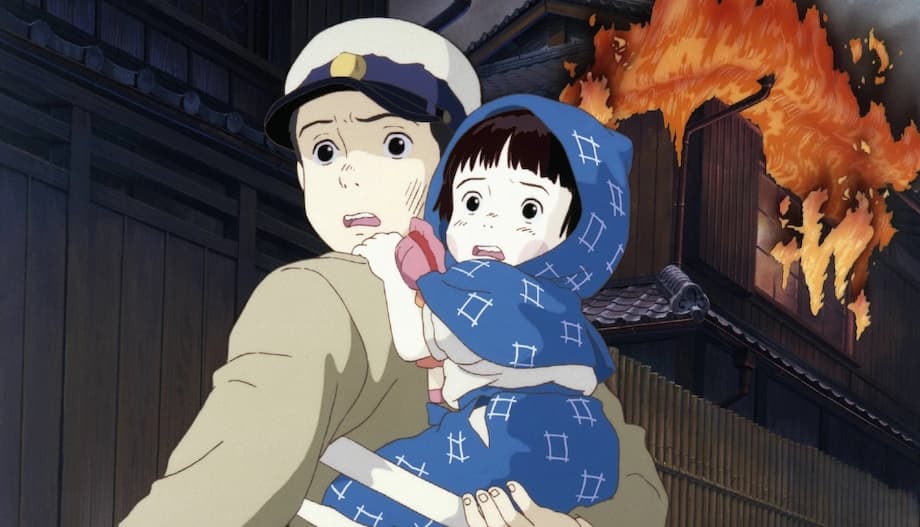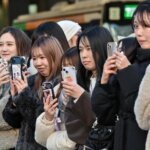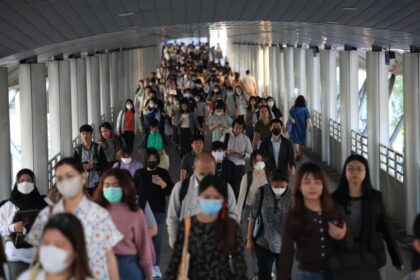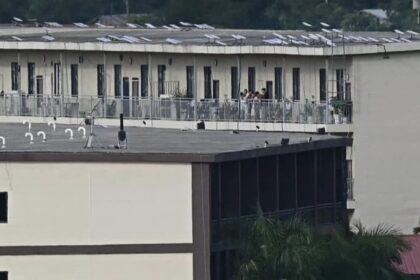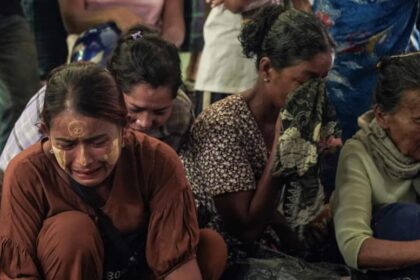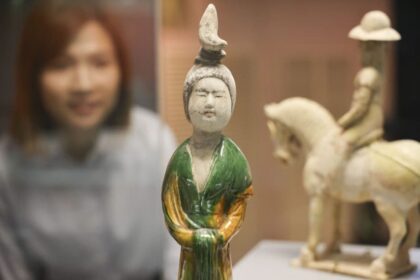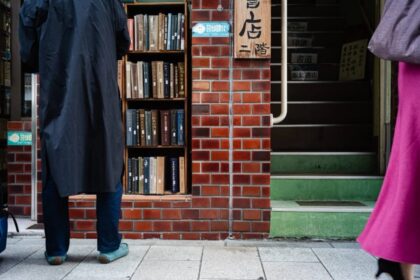Anime as a Bridge to World War II Memories in Japan
For many young Japanese, the horrors and hardships of World War II are not distant history, but vivid memories shaped by the powerful medium of anime. In classrooms across Japan, films like Grave of the Fireflies are shown to students, offering a deeply emotional window into the lives of ordinary people during wartime. Leo Kataoka, now 24, recalls watching the film in his ninth-grade civics class. He says that while he doesn’t think about it every day, whenever the topic of school films comes up, Grave of the Fireflies is the first thing that comes to mind, a testament to its lasting impact.
- Anime as a Bridge to World War II Memories in Japan
- Why Anime? The Power of Animation in Teaching History
- Anime in the Classroom: Educational Strategies and Debates
- Beyond Grave of the Fireflies: Other WWII Anime and Their Messages
- Anime and the Shaping of Collective Memory
- Global Impact: Anime as a Cultural Ambassador
- In Summary
Anime has become a unique tool for Japanese educators, not only to teach history but to foster empathy and reflection among youth. This article explores how anime preserves the memory of World War II, the educational strategies behind its use, and the broader cultural implications for Japan and the world.
Why Anime? The Power of Animation in Teaching History
Animation holds a special place in Japanese culture, blending artistry, storytelling, and emotional depth. Unlike traditional textbooks or documentaries, anime can depict the personal and psychological toll of war in ways that resonate with young viewers. The medium’s ability to combine realism with symbolism allows it to convey complex historical events and moral lessons without overwhelming or alienating its audience.
Studio Ghibli’s Grave of the Fireflies, directed by Isao Takahata, is perhaps the most iconic example. The film tells the story of Seita, a teenage boy, and his younger sister Setsuko as they struggle to survive in Kobe during the final months of World War II. Orphaned by firebomb raids, the siblings face starvation, societal indifference, and the collapse of their world. The film’s opening line, “September 21, 1945… That was the night I died,” spoken by Seita’s spirit, sets a somber tone that lingers with viewers long after the credits roll.
By focusing on the experiences of children, anime like Grave of the Fireflies and Barefoot Gen (which depicts the Hiroshima bombing) make the abstract horrors of war painfully concrete. These stories are not about generals or politicians, but about ordinary people—especially the youngest and most vulnerable—caught in the machinery of history.
From Propaganda to Pacifism: The Evolution of War in Anime
The relationship between anime and World War II began during the war itself. The first feature-length anime, Momotaro: Sacred Sailors (1945), was a propaganda film funded by the Japanese Navy. It used cute animal characters to promote patriotism and justify Japan’s military actions, portraying Western enemies as cowardly and Japan as a liberator. After the war, however, the tone of anime shifted dramatically.
With the end of American occupation and censorship, Japanese creators began to use anime and manga to process the trauma of war. Works like Barefoot Gen and Grave of the Fireflies emerged as part of a broader literary and artistic movement that sought to preserve the memories of wartime suffering and to promote a message of peace. These stories often focus on the devastation of 1945—the firebombings, atomic bombings, and the collapse of the home front—rather than on Japan’s earlier military victories or its role as an aggressor.
This focus reflects a broader shift in Japanese collective memory. After the war, feelings of shame and remorse were gradually replaced by a sense of victimization and a strong commitment to pacifism. The suffering of ordinary people became the central narrative, shaping how generations of Japanese understand their country’s past.
Anime in the Classroom: Educational Strategies and Debates
Japanese schools have long recognized the educational potential of anime. Films like Grave of the Fireflies are shown in classrooms, especially around August 15, the anniversary of Japan’s surrender. Teachers use these films to spark discussions about the human cost of war, the importance of peace, and the dangers of blind obedience to authority.
According to educators, anime is particularly effective because it engages students emotionally and intellectually. Unlike dry historical accounts, these films invite viewers to empathize with the characters and to reflect on the moral choices they face. As one teacher explained, “Showing Grave of the Fireflies without much background allows students to react honestly. Some are moved to tears, while others, aware of Japan’s wartime aggression, question the portrayal of Japanese as victims. This opens up important conversations about history, memory, and responsibility.”
Studio Ghibli films are also used in cross-curricular lessons, connecting history, literature, and art. For example, students might read the original novel, compare it to the film adaptation, and create their own illustrations or stories from new perspectives. This approach deepens their understanding of both the historical events and the creative process behind the films.
Controversies and Critiques
The use of anime in education is not without controversy. Some critics argue that films like Grave of the Fireflies focus too much on Japanese suffering, neglecting the country’s role as an aggressor and the suffering it inflicted on others, particularly in Asia. There are concerns that this victim-centered narrative may limit empathy for the victims of Japanese wartime actions, such as the Nanjing Massacre or the exploitation of Korean “comfort women.”
Educators and scholars emphasize the need to provide context and to encourage critical thinking. By discussing the broader historical background and the different perspectives of those affected by the war, teachers can help students develop a more nuanced understanding of the past. As one expert noted, “The main objective of these works is to teach youth to hate war and the systems that cause it. The enemy is not the Allies, but war itself and the political order that led to tragedy.”
Beyond Grave of the Fireflies: Other WWII Anime and Their Messages
While Grave of the Fireflies is the most famous, it is far from the only anime to tackle World War II. The genre is rich and diverse, offering a range of perspectives and styles:
- Barefoot Gen: Based on Keiji Nakazawa’s experiences as a Hiroshima survivor, this anime and manga depict the atomic bombing and its aftermath with unflinching realism.
- The Cockpit: A dramatic anthology exploring the psychological impact of war on soldiers and civilians alike.
- Zipang: A modern Japanese warship is transported back to 1942, forcing its crew to confront moral dilemmas about changing history.
- Girls und Panzer: A lighthearted series where high school girls compete in tank battles using WWII-era vehicles, blending history with fantasy.
- Kantai Collection: Anthropomorphized warships as high school girls, reflecting on naval history and the spirit of the Japanese fleet.
- Letters From Hibakusha: An animated anthology of survivor letters from Hiroshima, offering personal testimonies of the atomic bombings.
These works range from somber dramas to satirical comedies, but all contribute to the ongoing conversation about war, memory, and identity in Japan.
The Nuclear Legacy in Anime
The atomic bombings of Hiroshima and Nagasaki have left an indelible mark on Japanese culture, and anime is no exception. Films like Akira use post-nuclear settings to explore themes of technological hubris, trauma, and the dangers of unchecked power. Even seemingly unrelated genres, such as science fiction and fantasy, often contain subtle references to nuclear destruction and its aftermath.
This “nuclear anxiety” is a recurring motif, reflecting Japan’s unique position as the only country to have suffered atomic attacks. Anime and manga have also played roles in protest movements and social commentary, using allegory and symbolism to critique political and social issues.
Anime and the Shaping of Collective Memory
Collective memory refers to how societies remember and interpret the past. In Japan, anime has become a powerful tool for shaping collective memory of World War II. By focusing on the experiences of ordinary people—especially children—anime humanizes history and makes it accessible to new generations.
However, this process is not without its challenges. The emphasis on Japanese victimhood can sometimes obscure the country’s responsibility for wartime aggression. As scholars point out, collective memory is always selective, shaped by cultural, political, and social forces. Anime reflects and reinforces these dynamics, offering both opportunities and risks for historical understanding.
Internationally, anime provides a window into Japanese perspectives on the war, sparking discussions about how different societies remember and teach history. In American classrooms, for example, Grave of the Fireflies is used to prompt debates about the differences between American and Japanese collective memories of World War II.
The Role of Education in Shaping Memory
Japan’s education system is renowned for its rigor, discipline, and emphasis on moral development. After World War II, the system was reformed to promote democratic values and critical thinking, while retaining traditional virtues like respect, responsibility, and cooperation. Teachers are highly respected and play a key role in shaping students’ character and worldview.
Anime fits naturally into this educational philosophy. By engaging students emotionally and intellectually, it supports the development of empathy, critical thinking, and a sense of social responsibility. As one educator observed, “Anime helps students relate to material outside their usual experiences, making history feel real and relevant.”
Global Impact: Anime as a Cultural Ambassador
The influence of anime extends far beyond Japan. Films like Grave of the Fireflies and Barefoot Gen have been translated into multiple languages and shown in classrooms around the world. They offer international audiences a glimpse into Japanese experiences of war, challenging stereotypes and fostering cross-cultural understanding.
Anime’s global popularity also means that its messages about war, peace, and humanity reach millions of viewers. Whether through somber dramas or fantastical adventures, anime encourages audiences to reflect on the past and to imagine a better future.
Innovation in Teaching: New Approaches to Anime and History
Educators are increasingly using innovative methods to integrate anime into their teaching. At universities, professors like Will Bridges at the University of Rochester use immersive and participatory approaches, encouraging students to design their own syllabi and engage with Japanese culture through anime and literature. These methods foster critical thinking, creativity, and a deeper appreciation for the complexities of history and memory.
In Summary
- Anime is a powerful medium for preserving and teaching the memories of World War II in Japan, especially among youth.
- Films like Grave of the Fireflies and Barefoot Gen depict the human cost of war, focusing on the experiences of children and civilians.
- Japanese schools use anime to foster empathy, critical thinking, and discussions about history, peace, and responsibility.
- The use of anime in education is not without controversy, as it can emphasize Japanese victimhood while neglecting the country’s wartime aggression.
- Anime reflects broader trends in Japanese collective memory, emphasizing pacifism and the suffering of ordinary people.
- The global popularity of anime makes it a cultural ambassador, promoting understanding and dialogue about history and humanity.
- Innovative teaching methods are expanding the use of anime in classrooms, both in Japan and internationally.


